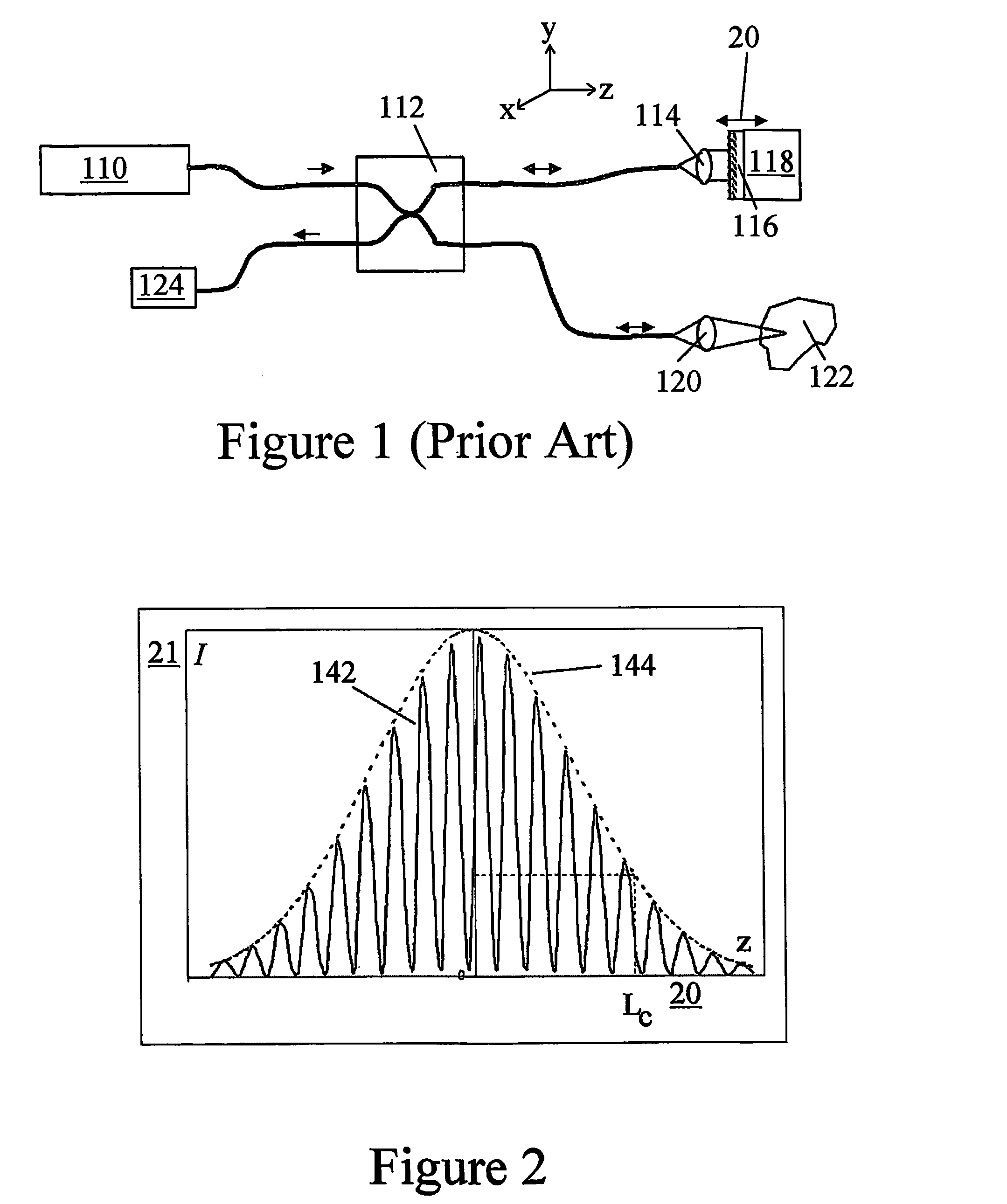Optical coherence tomography with 3d coherence scanning
a coherence scanning and optical coherence technology, applied in the field of optical coherence scanning with 3d coherence scanning, can solve the problems of reducing the sensitivity of eye movement, no 3d image appears to be produced by the apparatus, and no 3d image is described in the paper
- Summary
- Abstract
- Description
- Claims
- Application Information
AI Technical Summary
Benefits of technology
Problems solved by technology
Method used
Image
Examples
Embodiment Construction
[0131]Disclosed herein is a new fiberoptic OCT system with coherence 3D scanning of an object 122 to be scanned. The concept is based on using multiple fibers for illumination and / or collection of light from a sample. Referring to FIG. 3, we begins by considering consider a first fiber 201 and a second fiber 202 of equal lengths connected to a common low-coherence light source 110, each emitting a diverging beam, so that there is an area where the beams overlap. In the area of overlap, interference of the beams will take place. A resulting x-fringe pattern 206 will vary in the x,y plane, normal to the regular OCT coherence scan in z-direction.
[0132]FIG. 4 illustrates the 3D x-fringe pattern produced by light from these two fibers, which can be made by considering cross-sections of the pattern by sides of a cube 220, with the light sources (fiber tips 1 and 2) at two corners 222 and 224 along the x axis. The scale of the fringes is arbitrary and is chosen for illustration purposes on...
PUM
| Property | Measurement | Unit |
|---|---|---|
| diameter | aaaaa | aaaaa |
| volume | aaaaa | aaaaa |
| area | aaaaa | aaaaa |
Abstract
Description
Claims
Application Information
 Login to View More
Login to View More - R&D
- Intellectual Property
- Life Sciences
- Materials
- Tech Scout
- Unparalleled Data Quality
- Higher Quality Content
- 60% Fewer Hallucinations
Browse by: Latest US Patents, China's latest patents, Technical Efficacy Thesaurus, Application Domain, Technology Topic, Popular Technical Reports.
© 2025 PatSnap. All rights reserved.Legal|Privacy policy|Modern Slavery Act Transparency Statement|Sitemap|About US| Contact US: help@patsnap.com



